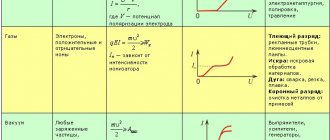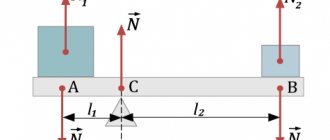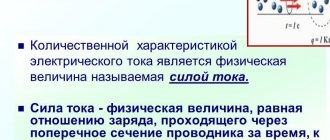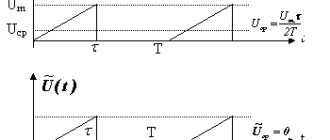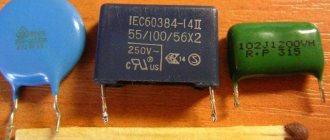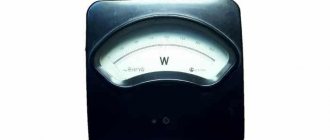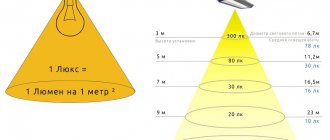Lux is the main unit of measurement when designing and testing lighting standards in all types of premises, as well as outdoors. Lux in lighting is used as an indicator with which you can ensure the normal performance of any work. The main thing is to choose lighting in accordance with the standards established by SNiP and SP.
The illumination should be such that a person feels comfortable in the room.
What is luxury
The meaning of Lk in lighting means lux; understanding the term is not difficult. It is used to normalize light. If you violate the recommended rules, it will negatively affect your vision. A person will get tired much faster or his eyes will hurt due to excessive brightness. All the main indicators are in SP 52.13330.2016, this is the main regulatory document that guides all Russian designers.
There are two main indicators - luxes and lumens, the difference that few people understand, although everything is simple here:
- Lumen (Lm) is a unit of measurement of luminous flux used in the International System of Physical Quantities. It is equal to the flux emanating from a point source with a luminous intensity of 1 candela. That is, this indicator reflects the total luminous flux emanating from the lamp. It does not take into account the concentration of light due to the reflector or its useless dispersion in all directions.
- Lux is a unit of measurement of illumination that is part of the international system. It is equal to the illumination of an area of 1 sq.m. with a light intensity of 1 lumen. If a luminous flux of 200 lumens falls per square meter, the illumination is 200 lux. If the light is distributed over 10 sq. m., then the illumination will be 20 Lux.
A clear example of how lanterns with the same luminous flux, but a different light beam, can shine.
Lighting standards in Europe are an order of magnitude higher than in Russia.
Multiples and submultiples
Zener diode TL431
The unit of illumination - lux, like all metric quantities related to each other, has multiple and submultiple units of measurement or designations.
Information. Multiple units are those that are an integer number of times higher than the unit of the original physical quantity, and submultiples are those that are an integer number of times lower than this value.
Multiples and submultiples of lux units (lx)
The illumination of the earth's surface from Sirius is 1*10-5 lux, from the Sun at winter noon - 1*104 lux.
Lighting standards in different types of premises
SNiP regulates all the main indicators. You need to find the type of room to find out the minimum acceptable value from which to base your design. In this case, the range can be quite large, it all depends on the specifics of the work performed and other features. Below is the illumination in lux - the table shows the values for the main types of rooms.
| Room | Illumination standard, in Lux |
| Office space for working on computers or with documents | 300 |
| Meeting rooms, conference rooms | 200 |
| Stairs, escalators | 50-100 |
| Corridors, halls | 50-75 |
| Storerooms, utility rooms | 50 |
| Drawing rooms | 500 |
| Living rooms and kitchens | 150 |
| Children's rooms, play areas | 200 |
| Libraries, offices | 300 |
| Bathrooms, corridors in apartments | 50 |
| Saunas, baths, swimming pools | 100 |
| Classrooms | 400 |
| Gyms | 200 |
For each type of room, the lighting standard is different.
There are indicators for other areas as well. As for production facilities and workshops, there is a gradation according to the degree of accuracy of the work performed. Depending on this, the illumination can vary from 50 to 5000 lux and even more. Moreover, there are requirements for both local and general lighting; both parameters are equally important.
Video
Coffee capsules Nescafe Dolce Gusto Cappuccino, 8 servings (16 capsules)
435 ₽ More details
Coffee capsule Nescafe Dolce Gusto Cafe O Le Coffee with milk, 3 packs of 16 capsules each
1305 ₽ More details
24 inch TVs
Illumination scale in lux
To determine the appropriate lighting mode, you can use another option - the illumination scale. It sets recommended values depending on the activity being performed.
| Occupation | Recommended light level |
| Places with dark surroundings | From 30 to 50 |
| Sites and premises where permanent work is not carried out | 100-200 |
| Places with limited visual strain | 200-500 |
| Objects with an average level of visual work | 500-1000 |
| Works with high light requirements | From 1000 to 2000 |
| Carrying out precision work | 2000-5000 |
| Ultra-precise work | From 5000 to 10000 |
| Rooms requiring special lighting conditions (for example, operating rooms) | 10000-20000 |
The higher the accuracy requirements, the brighter the light must be.
One room may have several different zones if this is required for the normal performance of work.
Exposure number
The same photo with different exposure numbers
Exposure number
(English Exposure Value, EV) is an integer characterizing possible combinations of
shutter speed
and
aperture
in a photo, film or video camera. All combinations of shutter speed and aperture that expose the same amount of light to the film or sensor have the same exposure number.
Several combinations of shutter speed and aperture in the camera at the same exposure number allow you to obtain an image of approximately the same density. However, the images will be different. This is due to the fact that at different aperture values, the depth of the imaged space will be different; at different shutter speeds, the image will remain on the film or matrix for different times, as a result of which it will be blurred to varying degrees or not blurred at all. For example, the combinations f/22 - 1/30 and f/2.8 - 1/2000 are characterized by the same exposure number, but the first image will have a large depth of field and may be blurry, and the second will have a shallow depth of field and, quite possibly , will not be blurry at all.
In the left photo, due to the long shutter speed, the movement of the water is emphasized, while in the right photo, due to the relatively short shutter speed, the movement is not so noticeable and the water is depicted sharply
Higher EV values are used when the subject is better lit. For example, an exposure value (at ISO 100) of EV100 = 13 can be used when shooting landscapes if the sky is cloudy, and EV100 = –4 is suitable for shooting bright aurora.
A-priory,
EV = log2( N
2/
t
)
or
2EV = N
2/
t
, (1)
- Where
- N
- aperture number (for example: 2; 2.8; 4; 5.6, etc.) - t
- shutter speed in seconds (for example: 30, 4, 2, 1, 1/2, 1/4, 1/30, 1/100, etc.)
Dependence of depth of field on aperture value at the same exposure number
For example, for a combination of f/2 and 1/30, the exposure number
EV = log2(22/(1/30)) = log2(22 × 30) = 6.9 ≈ 7.
This number can be used to shoot night scenes and illuminated storefronts. Combining f/5.6 with a shutter speed of 1/250 gives the exposure number
EV = log2 (5.62/(1/250)) = log2 (5.62 × 250) = log2 (7840) = 12.93 ≈ 13,
which can be used to shoot a landscape with a cloudy sky and no shadows.
It should be noted that the argument of the logarithmic function must be dimensionless. In determining the exposure number EV, the dimension of the denominator in formula (1) is ignored and only the numerical value of the shutter speed in seconds is used.
The same exposure number 12 is installed on a Zenit-ET film camera and a Canon 5D Mark II digital camera
Minimum illumination in lux
If the lamp power is indicated in watts, it is necessary to convert the indicators into lux, since the standards are indicated specifically for them. There is information about how many lux are in 1 W of different light sources, so making calculations is not difficult. As for the minimum illumination, the data specified in SNiP are precisely the lower indicator that you should focus on.
The light can be brighter than the established standards; there are no special restrictions on this matter. The main thing is that there is no discomfort for vision. But as for indicators below the established value, the permissible difference is no more than 10%. This is the absolute minimum, below which you cannot fall.
Emergency lighting should ensure normal visibility during evacuation.
Luminous radiation efficiency
Glow efficiency is measured as the ratio of luminous power (Lm) to the electrical power of the source (W). The Lm/W ratio is an indicator of the efficiency of a lighting source. With equal electrical energy consumption, LED lamps emit a more powerful luminous flux compared to incandescent lamps. The emission efficiency of LEDs is much higher compared to conventional light bulbs. For example, the brightness of an 8 W LED is approximately equal to the brightness of a 40 W incandescent lamp. Thus, LED lamps allow you to save energy without compromising the brightness of the lighting.
How to determine illumination in lux
Calculations do not take much time if at least the lamp power in lumens is known. It differs for different light sources. And if the packages of LED and fluorescent products have all the necessary information, then incandescent lamps may not have it. But it’s not difficult to calculate the light intensity in lumens - the power in watts is multiplied by 12. So, the 100 W option produces approximately 1200 Lm.
The packaging with LED lamps contains all the necessary information.
To determine the illumination without using equipment, you need to know the total power of the lamp and the area over which the light spreads. Based on this, it is not difficult to calculate the approximate value. It should be understood that the obtained result is approximate, since it cannot take into account the loss of light flux and the peculiarities of its distribution by the diffuser of the lampshade.
We must also remember that during the daytime natural light enters the room through window openings. This affects the illumination; the indicators will be much higher even on a less than sunny day.
Unlike artificial light, natural light depends on a number of conditions - cloudiness, region, location of buildings and trees nearby. To assess the quality of lighting, KEO (natural light factor) is used, which is measured at floor level at a distance of 1 meter from the wall opposite the window openings.
Main conclusions
Thus, when organizing lighting in a home, office or workplace, you need to take into account indicators such as Lumen and Lux. The difference between them is that the first value indicates the luminous flux of the lighting device, and the second - the level of illumination of a small area of the surface. The number of lm is always indicated on the packaging of the light bulb. To determine the number of Luxes, the number of Lumens must be divided by the area in m². You can convert Lux to Lumens using the following formula: Lux x m² = Lumens. To carry out calculations, you need to know the standard of illumination for different types of premises and its area. Then all that remains is to purchase the required number of light bulbs.
Previous
Lighting in the apartmentHow to properly organize and distribute lighting in the apartment
Next
Lighting in an apartmentWhat is lumen and luminous flux
Calculation of the number of LED lamps for a room
According to the previous information, you can find out the number of LED lamps by calculating the light flux and dividing it by the power of the lamps. For example, for a kitchen with an area of 20 square meters and a ceiling height of 3 meters, where it is planned to install LED chandeliers or lighting of 900 lumens, 4 lighting fixtures using counting technology are needed.
In the calculation example, it is worth indicating that the calculations were made as follows: (150 lux lighting standards for the kitchen * 20 square meters * 1.2 ceiling coefficient) / 900 lumens. You can also calculate the required number of light sources using special online calculators on the Internet.
Required number of LED lamps for the room
